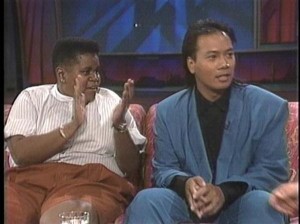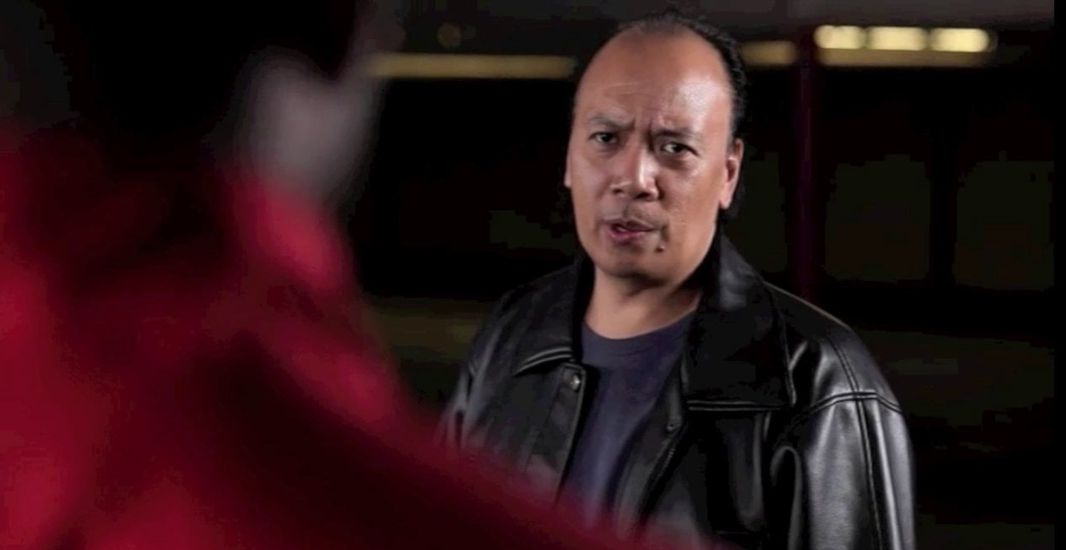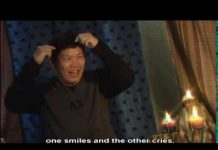It’s time again for an interview with John Kreng! Stop reading that Gold Key issue of The Funky Phantom! Part 1
John Kreng: Are you talking to me, Tom? I was never into The Funky Phantom. I felt the show was a weak re-hashing of Scooby Doo. When I was growing up I was more into Batfink, Speed Racer, Gigantor, Ultraman, Lancelot Link: Secret Chimp (where’s PETA when you need them?), and The Amazing Chan & the Chan Clan. Amazing Chan was an animated cartoon where Charlie Chan would solve mysteries with his 10 kids (Yes, Charlie was “busy” in-between solving mysteries and definitely did not believe in birth control!). On the show, I had a “cartoon crush” on Suzie Chan, the svelte daughter who was drawn much like Daphne on Scooby Doo, and played tambourine with the family rock band! She was smokin’ hot eye candy! The animators at Hanna-Barbera must’ve had a serious Asian fetish! LOL! Okay Tom, fire away!

Tom: Does “play” relate to improvisation in doing stand-up? Do you think improvisation in comedy is a form of play?
John Kreng: I feel play is an important state of mind to have when you are doing ANYTHING CREATIVE. One of the reasons is that when you do anything creative there has to be a playful childlike curiosity with what you do. There’s also “serious play” too. A great example of that is when I work as a stuntman or stunt coordinator. There are lives at stake so you have to be serious about what you are doing. However, the element of play is still underlying because you are in a mode of creating something from nothing.
Tom: Why do you think some games seem to entirely forget the play factor these days?
John Kreng: Well, personally, I feel the games industry has become too “corporatized” and has lost it’s creative innocence that it had in the 16 bit Super Nintendo/ Sega Genesis days. The games during those times were very creative and were not afraid to push the envelope. You will never see games that have so much ingenuity and creativity these days because I feel the titles are so “railroaded” into a specific genre, killing any type of creativity or originality. My favorites games that I still own on 16 bit are Zombies Ate My Neighbors, Ecco: The Dolphin,Rock & Roll Racing, Mega-Man X, Super Bomberman, Super Metroid, and Earthworm Jim. The 16 bit era was much like American film was in the 70’s- individualistic, inspired, and creative. This was when video games first made more $$ than the film industry, so corporations took notice and decided to take part in it. I felt this was the beginning of the eventual demise of the originality and creativity of videogames because the ones in control were not creative types but more profit oriented. The funny thing no one really talks about is the reason why videogames make more than movies is the price for the games. In comparison, it’s a completely different experience for the viewer/gamer and most importantly they also charge two times (or often more) the amount of a movie ticket.
Tom: What’s new in your poster collection?
John Kreng: The latest in my collection are Super Cops (Gordon Parks’ film starring Ron Leibman and David Selby.. not the Jackie Chan film), Hooper- The World’s Greatest Stuntman, Kung Fu Executioners, Master of the Flying Guillotine, Return of the Master Killer, and Dynamite Brothers. I am still looking for Mystery of Chess Boxing, Rolling Thunder, Ilsa: She Wolf of the SS, Shogun Assassin, I Spit On Your Grave, Nightmare on Elm Street , and The Hills Have Eyes. For those of you who do not know me… I was an illustration and advertising major in college and I collect exploitation movie posters from the 60’s, 70’s, and early 80’s because artwork in the posters during that time really leaped out at you when you walked past the theater, creating a strong curiosity drawing you into seeing the movie. Often times the poster art was much better than the actual movie was. Today, movie poster art really bores me to death because the emphasis with the promotion is very star oriented and they simply just paste the face of the actor on the poster. Because of this, I feel movie poster art today lacks any real creativity and ingenuity to attract the audience to see the film. There are only a few guys still painting movie poster art these days like Drew Struzan, but he’s a rare exception.
Tom: What are the gwai lo movie picks of the month
John Kreng: Ok… I am listing obscure stuff you typically cannot find at a Blockbuster. You might need a region free player to play some of these DVDs.
- Attack the Gas Station ( Korea 1999) One night a bored gang re-robs a gas station they hit the night before. The gang holds the employees hostage when the owner pleads he does not have much money to hand over to them since last night’s robbery. The gang decides to pose as the employees to get money from the customers and we find out how and why each member got to where they are today. Funny and thoughtful.
- Battle Royale (Japan 2000)- A movie that will probably never get an official release in North America because of the violence and the money that is being asked by the movie studio that owns the film for proper distribution in America . Google this title and you will see a lot of conflicting reviews and blogs on this movie over its graphic depiction of violence. Arguably Asia’s equivalent to A Clockwork Orange .
- A Bittersweet Life (Korea 2005) An emotionless Mafia Enforcer is asked by his boss to look after his girlfriend while he is out of town and is ordered to kill her on site if she is found to have an affair. His life falls apart when he catches her with another man and he decides to not take action. This is a combination film noir and modern day high octane action film.
- Buster Keaton: A Hard Act To Follow ( U.K. 1987)- A British documentary that shows you behind the scenes of the art and craft of comedy and stunts that made Buster a cinematic genius. This guy influenced Jackie Chan and you can clearly see why here in this documentary.
- A Century of Light & Shadow 1905-2005– A visual and narrative history of Shanghai/Hong Kong film history throughout the decades.
- The Fastest Sword (1968 Hong Kong)– A Wu –Xia film based off Henry King’s classic Western The Gunfighter (1950). A great “swordfighter” learns humility and peace after he is defeated by a master martial arts monk. But his reputation always precedes him, leading him to challenges, death, and destruction until he lays his reputation to rest.
- The Foul King (2000 Korea )– A Korean comedy where a nebbish bank clerk aspires to be a “heel” in the pro wrestling ring.
- Jackie Chan: My Stunts (1999 Hong Kong)- Great for anyone who is the least bit curious about the art of fight choreography, but required viewing for anyone in the film industry who wants to create an effective fight scene. The “Master Class” is worth the price of admission alone!
- Super Inframan (1975 Hong Kong )- a combination of Power Rangers and Ultraman, with acrobatic style martial arts. This was one of Roger Ebert’s favorite guilty pleasures.
- Vengeance (1970 Hong Kong )– Arguably one of David Chiang’s best performances. A dark and simple revenge film with rough kung fu brawls and brutal knife fights. An extremely visceral film that needs to be experienced to be appreciated.
Tom: Do YOU think you were a taoist gate guardian in the 13th century? I do. Don’t use that form of mental magic on me.
John Kreng: Are you referring to the joyous grin I get on my face when I am about to publicly humiliate someone AFTER that person has tried to con me with their b.s.? As a martial artist, you are taught to set your B.S. meter on high. Also as a stand up comedian, I‘ve been taught to cut you off at the knees when an audience member tries to take control of my show by heckling me. It’s a honed instinct that I often times don’t think about. Saucy, Master Kreng. Thank you!







